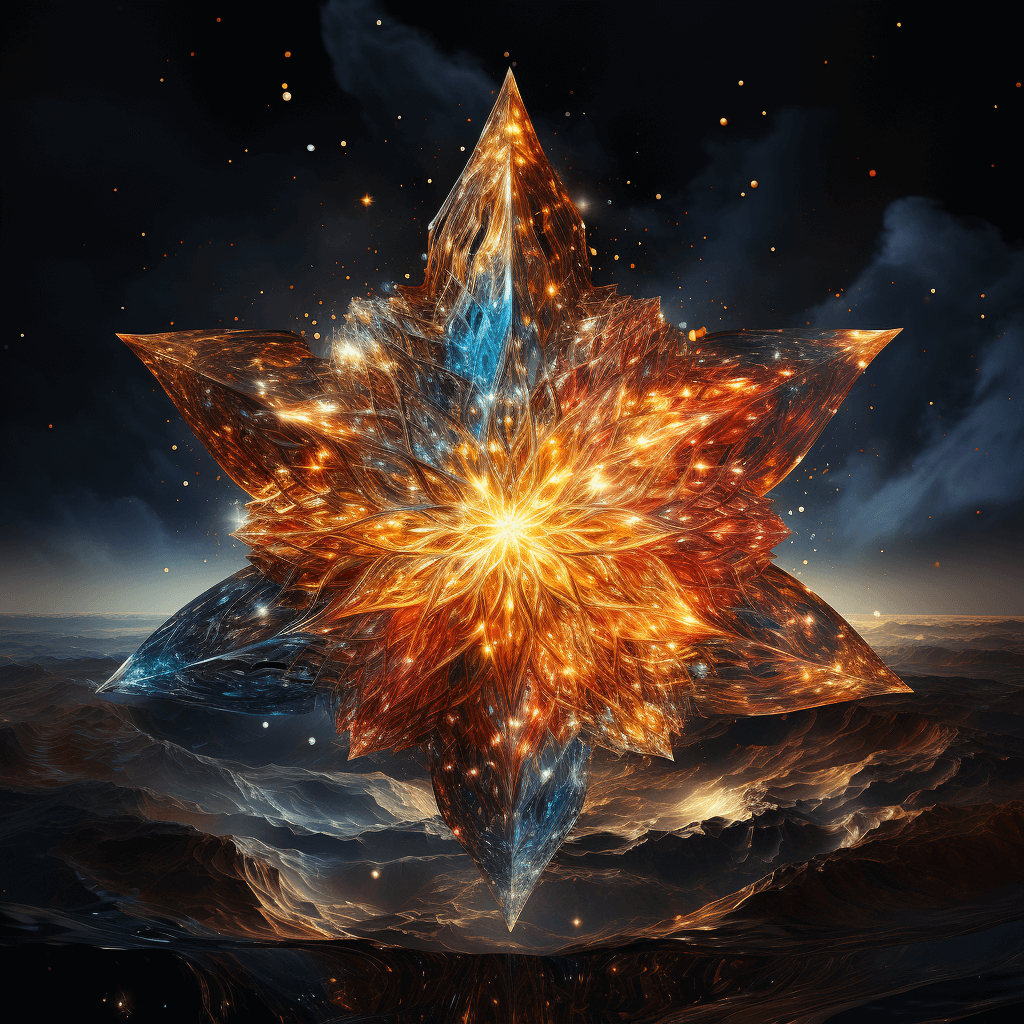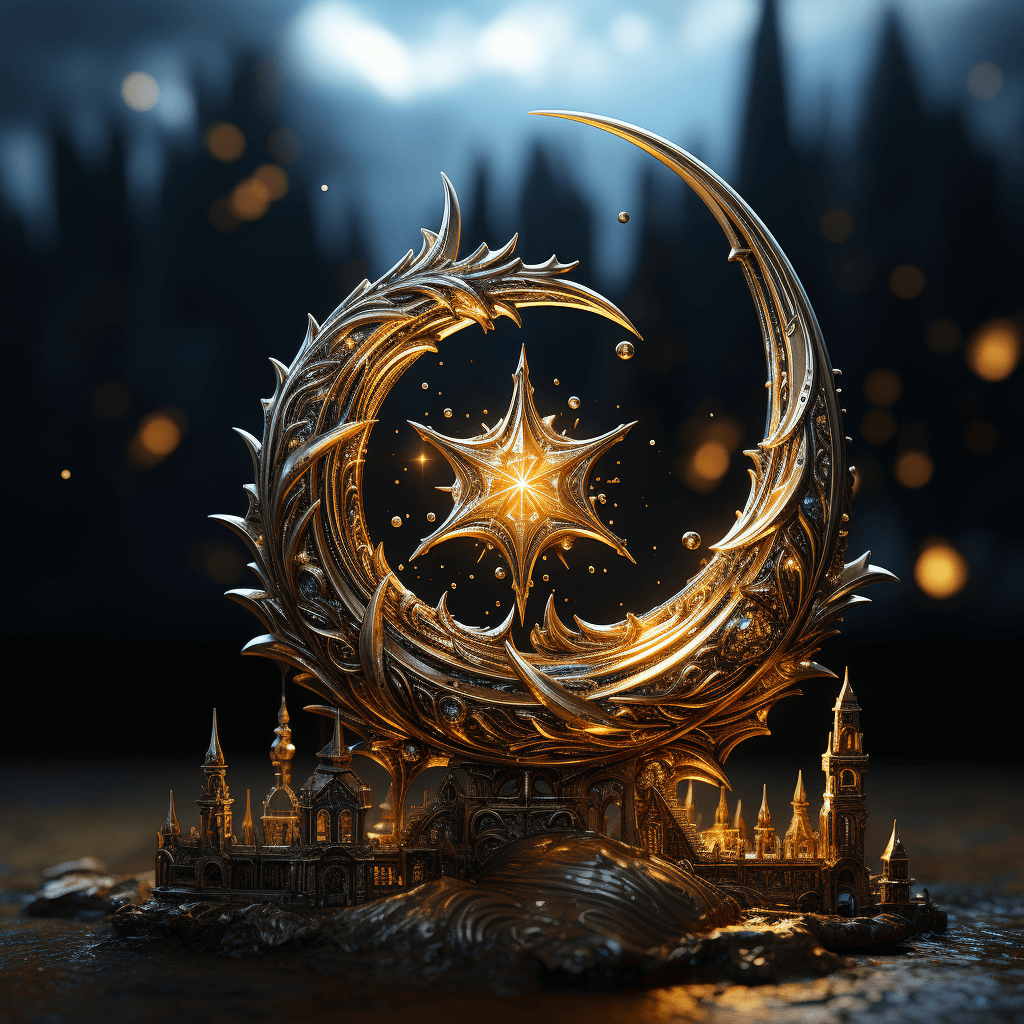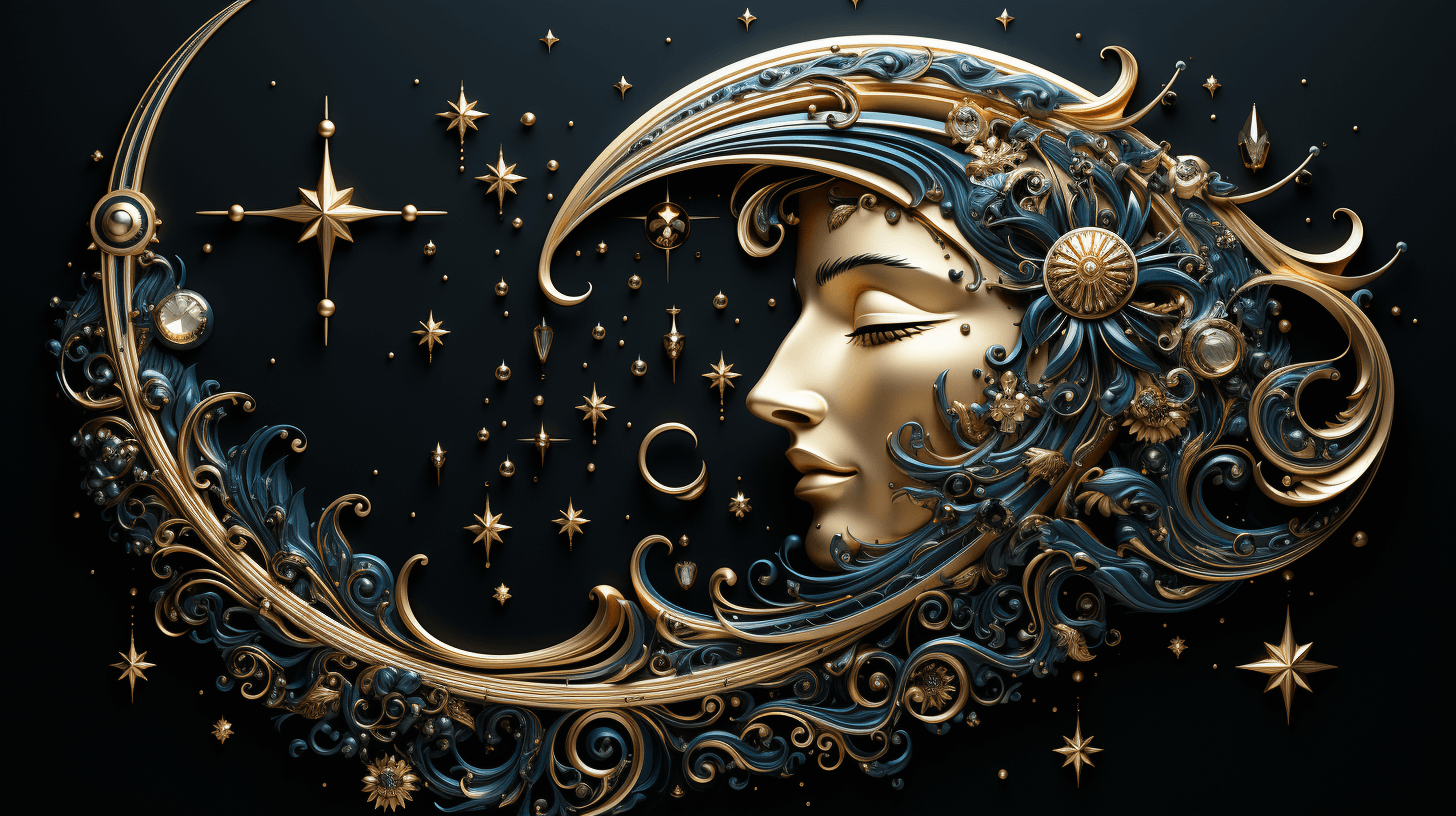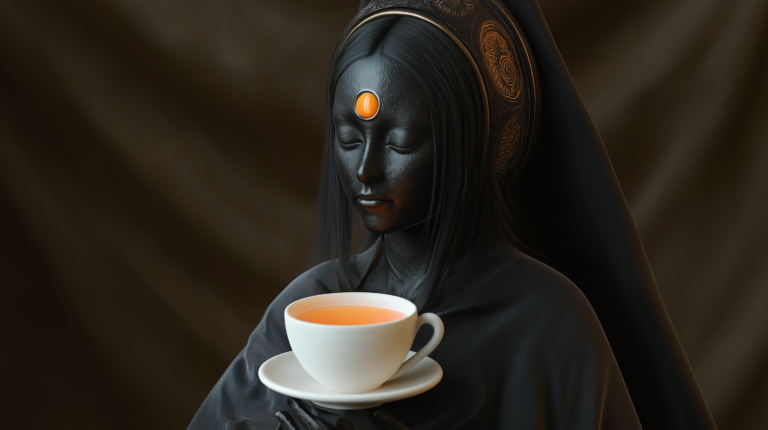Star, Moon and Crescent
Star, Moon, and Crescent symbolism: explore their varied meanings from celestial guidance, renewal, to femininity, change, and more. Let’s decipher them.
Star

A star is a powerful symbol that holds a multitude of meanings across different cultures and fields. Here are some common interpretations:
1. Navigation and Guidance:
Stars have been used for centuries as navigational tools by sailors and explorers. The North Star, for instance, has been a reliable reference point for orientation due to its consistent position in the northern sky. Therefore, the star as a symbol can represent a guide, a constant or a beacon that provides direction when one feels lost or unsure. In a metaphorical sense, it might suggest inner guidance, following one’s intuition, or a moral compass.
2. Spiritual and Divine Presence:
Stars are often seen as spiritual symbols, representative of the divine or celestial beings. In Christianity, the Star of Bethlehem guided the three wise men to the birthplace of Jesus, symbolizing divine guidance and the light of God. In other traditions, stars may represent ancestors or spirits. They often signify a bridge between the earthly and the divine, suggesting that higher powers are watching over us.
3. Achievement and Recognition:
Stars are commonly associated with excellence and prestige. For example, in Hollywood, stars on the Walk of Fame represent recognition of notable achievements in the entertainment industry. In academics and other fields, a gold star often denotes high performance or distinction. This association makes the star a symbol of accomplishment, aspiration, talent, or recognition.
4. Hope and Light in Darkness:
Stars are luminary bodies that shine in the dark expanse of the night sky. This contrast can symbolize the perseverance of hope and faith during challenging or dark times. The star can signify the enduring spirit, the faith that there will be light at the end of a difficult journey, or the belief that there’s still beauty to be found even in darkness.
5. Destiny and Astrology:
In astrology, stars play a central role. Astrological birth charts map the position of stars and planets at the exact moment of a person’s birth, which are thought to influence personality and fate. The star in this context can symbolize destiny, personality traits, or significant life events as understood through the lens of astrology.
6. Cosmic Energy and Mysticism:
In many esoteric and mystical traditions, stars are viewed as symbols of the cosmos’s energy or as keys to understanding the universe’s deeper mysteries. They may represent the pattern of cosmic forces, unseen energies, or spiritual growth and ascension.
7. Enlightenment and Knowledge:
The star can also signify enlightenment or knowledge. As celestial bodies that illuminate the dark, stars can represent the light of knowledge dispelling the darkness of ignorance. In this sense, they might symbolize wisdom, insight, or enlightenment, particularly of a spiritual or esoteric nature.
Moon

The moon has been a significant symbol in human culture, religion, and art for thousands of years. Its symbolic meanings are as diverse as the cultures that revere it, but there are some common interpretations. Here’s what the moon typically symbolizes:
1. Cycles and Change:
The moon is well-known for its phases, cycling from new moon to full moon. This has made it a universal symbol of change, cycles, and transformation. It is also associated with the cyclical nature of life, death, and rebirth.
2. Femininity and Motherhood:
In many cultures, the moon is seen as a feminine symbol, often in contrast to the masculine sun. It is frequently associated with goddesses, motherhood, and fertility. In some mythologies, such as Roman and Greek, the moon is personified as a goddess (Diana/Artemis).
3. Emotions and the Subconscious:
The moon can symbolize the realm of emotions, the subconscious, and intuition, particularly in psychology and certain spiritual or esoteric beliefs. The moon’s association with the night also links it with the mysterious, the mystical, and the dreamworld.
4. Illumination and Guidance:
Despite its less intense light compared to the sun, the moon provides guidance in darkness. It can represent the idea of spiritual illumination, enlightenment, or guidance in dark times.
5. Time and Passage:
The lunar cycle has been used to measure time in many cultures. Therefore, the moon can symbolize the passage of time and the rhythm of life.
A Star within a Crescent

The symbol of a star within a crescent is rich in symbolism and is notably associated with various cultures and religions.
1. Islam:
Perhaps one of the most recognized uses of the star and crescent symbol is in Islam, where it’s seen on many flags of Islamic nations. However, it’s worth noting that the symbol is not religiously significant in Islamic texts and was adopted for political reasons during the Ottoman Empire.
2. Turkish Flag:
The star within a crescent moon is the central feature of the Turkish flag, a legacy from the Ottoman Empire, symbolizing progress and brightness.
3. Mary, Star of the Sea:
In Christian iconography, particularly in depictions of the Virgin Mary, the star within a crescent can symbolize Mary’s role as a guide and beacon of hope in dark times. This interpretation is linked to the ancient title for Mary, “Stella Maris,” which translates to “Star of the Sea.”
4. Fertility and Mother Goddess:
In earlier pagan cultures and ancient civilizations, the crescent moon was often associated with female divinity and fertility, especially with goddesses like Artemis and Diana. The star inside the crescent in these contexts might represent the divine feminine or fertility.
5. Astrology:
In astrological symbolism, the crescent represents the moon, which signifies emotions, intuition, and the subconscious. The star within the crescent can denote illumination within these domains.
6. Alchemy:
In alchemy, the crescent moon is a symbol for silver, and the star (often represented by the sun) is a symbol for gold. Together, they can represent the union of opposites or the process of transformation.
A Crescent Inside a Star

The symbol of a crescent inside a star isn’t as universally recognized as the star within a crescent. However, the components of this symbol — the star and the crescent — hold significant meanings across various cultures and contexts, as we discussed earlier. Here are potential interpretations based on these elements:
1. Union of Opposites:
Both the star and the crescent are celestial symbols. The star often represents light, guidance, and the divine, while the crescent moon can represent change, cycles, and the feminine aspect. This combination could symbolize the unity or interplay of these opposing qualities.
2. Illumination within Cycles:
If the star represents illumination or divine guidance, its placement within the crescent could symbolize finding light within the cycles of change, or divine guidance through life’s phases and transitions.
3. Divine Feminine:
Given the crescent moon’s frequent association with the divine feminine and fertility in many cultures, the symbol of a crescent within a star could also represent feminine energy within the broader context of the divine or the universe.
4. Transformation and Growth:
In some interpretations, the star represents our aspirations, ideals, or spiritual growth. The crescent within could symbolize the process or journey of transformation towards these ideals, similar to the waxing and waning phases of the moon leading to its fullness.
5. Esoteric Symbolism:
In some esoteric or occult contexts, the star can symbolize as above (the divine, spiritual realm, cosmos), and the crescent as below (the material world, subconscious, emotional realm). The union of these two could represent the Hermetic principle “as above, so below,” suggesting the mirroring of the divine in the physical realm, or the interconnection of the spiritual and material worlds.






